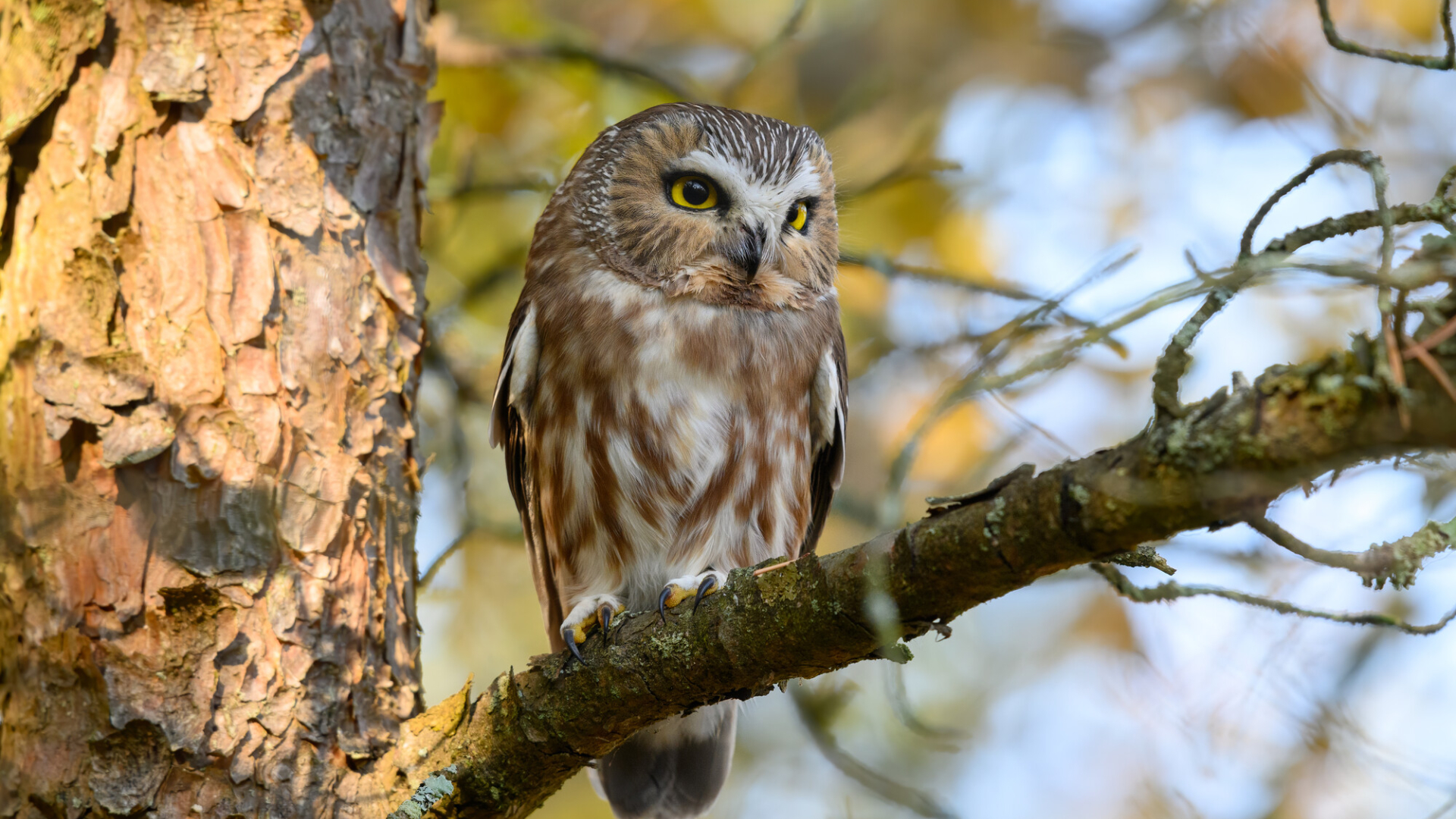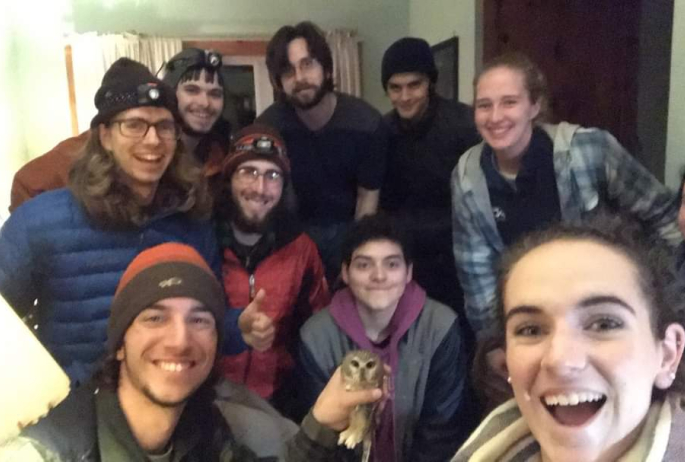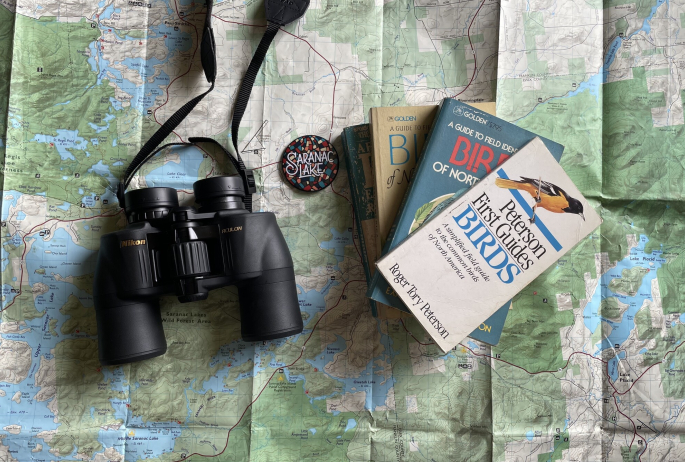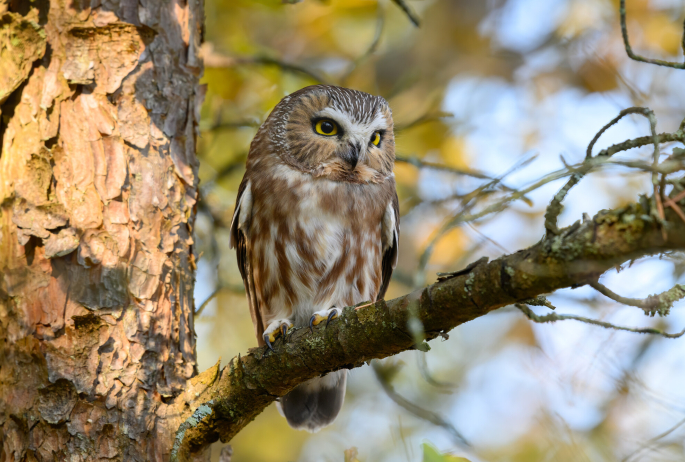It’s pitch-black, late at night on a cool spring evening several years ago. A group of us college students wander through the woods, a cacophony of owls hooting all around us. It’s no accident that we ended up in this situation. On that night, the Wildlife Club from SUNY Plattsburgh was visiting Mark Manske of Adirondack Raptors to learn about all things raptor ecology and conservation!
If you’ve ever been curious about “owling”, or even just getting outdoors to do some birding, you’ll surely be inspired after hearing about Mark and his own passion for these incredible creatures!
Who is Mark Manske?
If you’ve ever met Mark, be it at an educational event at the Paul Smith’s VIC or a signing even in town for one of his wildlife children’s books, you’ll know that his personality, a mix of knowledge naturalist and innately-curious educator, creates instant connection between yourself and his cause. His skills, which seem to be in his genetics, actually come from a combination of decades as a high school biology teacher, adjunct professor at Paul Smith’s College, and as of the last several years, a slew of critically important research projects.
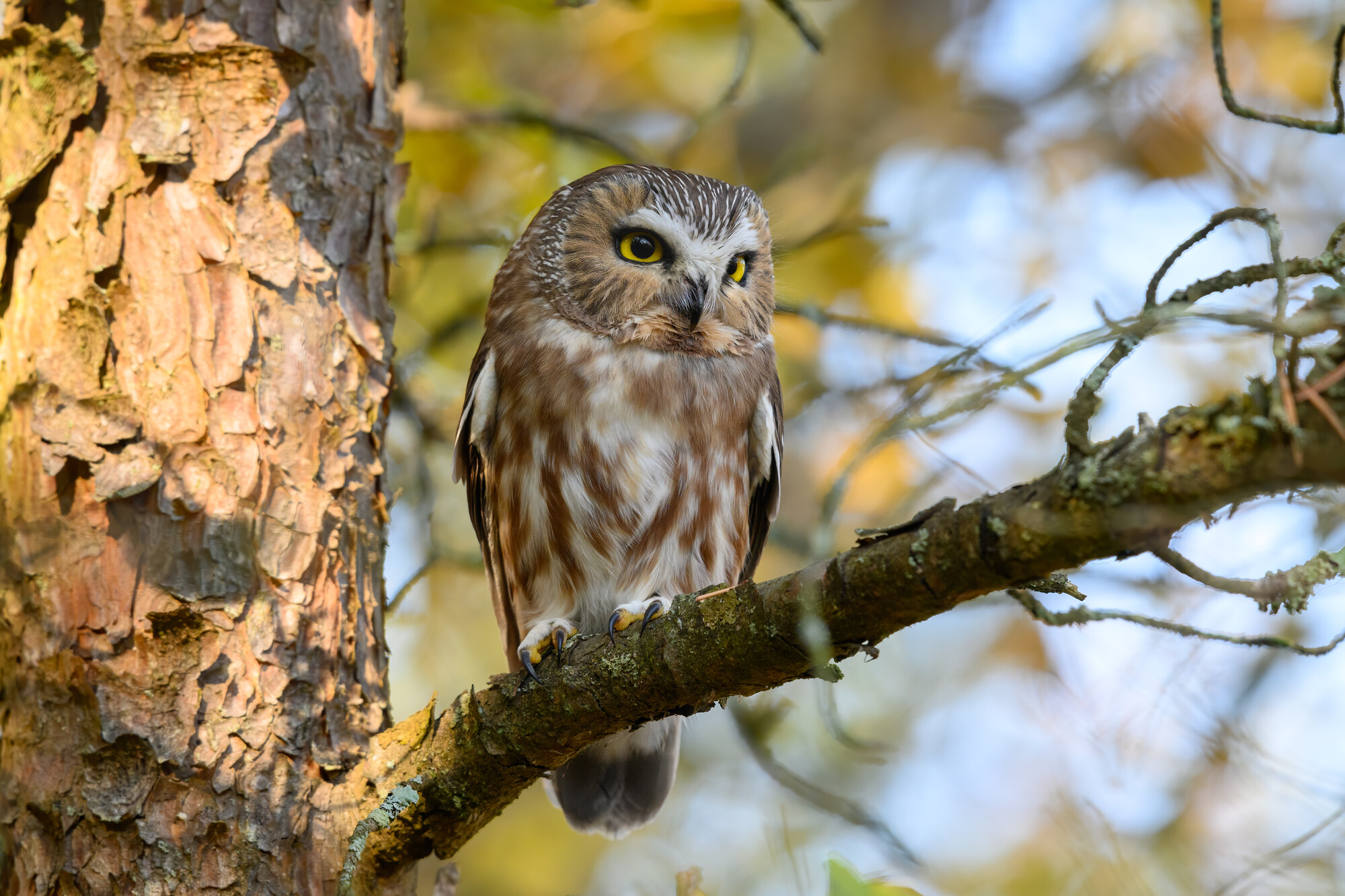
What research is Adirondack Raptors involved with?
Now more than ever, the tracking of wildlife movement has become critically important to our understanding of how animals are affected by climate change and other human activities. Over a decade ago, Mark established a long-term monitoring site for Northern saw-whet owls, where he measures and bands the tiny owls (never much bigger than your Nalgene!). The goal/benefit is twofold, being both an educational tool for all ages to learn raptor research methods, and an important node of a broader data network.
On that cool spring night a few years ago with my Wildlife Club, we got to experience the process first-hand. Upon arrival, Mark’s exuberance was apparent as he got us situated right at his home in Dickinson Center, NY. He prepped us on the process, how we’d set up fine-mesh nets called mist nets in the woods, put on a looped owl call, and check these nets every half hour or so. He divided our group into two small gaggles, and we would set off in the woods to check the nets. Sure enough, this particular night was kind to us! One after another, we’d see these little critters caught in the net, and take them back into his home to do a few different morphology measurements, and band the birds if they weren’t already. I would like to think that the birds we banded that night have been caught and measured by other scientists! It was an experience that we surely will never forget, being able to hold these teeny-tiny owls in our hands, creating tangible positive effects on the research effort to better understand them.
Mark has also seen himself involved in other raptor projects, including the maintenance of American Kestrel nesting boxes, monitoring Northern Goshawks, and Project SNOWstorm, which aims to help relocate snowy owls from dangerous situations at airports, and understand their ecology. Mark’s website is a great resource for if you’re interested in learning about, and even taking part in, these projects.
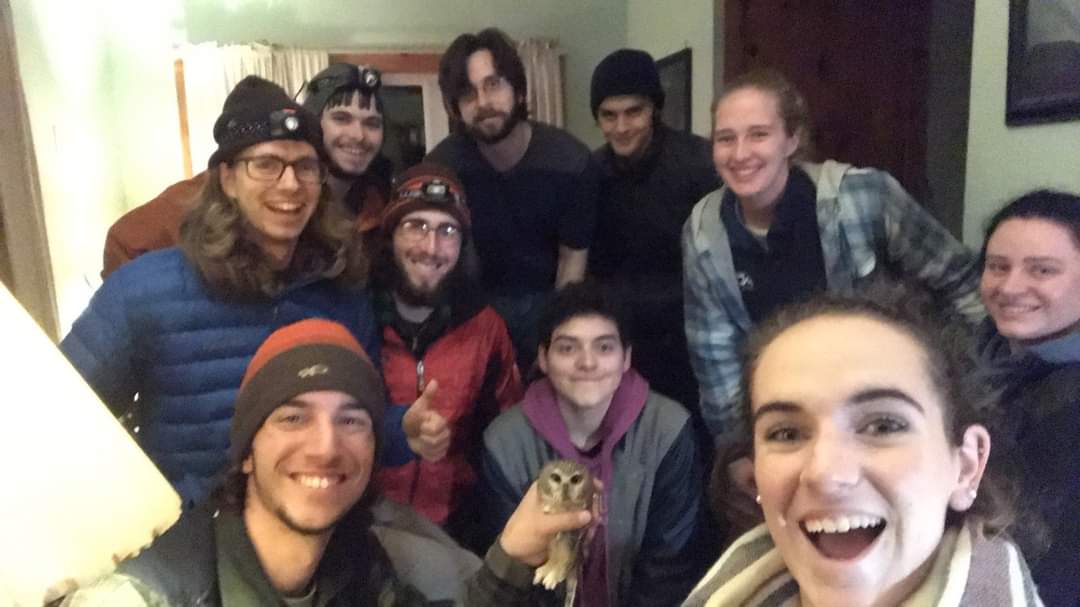
Adventures with Stoney book series
Mark’s book writing endeavor is the perfect outlet for someone who spent decades in public education. Using his knowledge of the natural world, Mark has crafted a book series aimed at young kids and middle schoolers. It recounts the adventures of “Stoney”, who is entangled in a series of adventures, like tracking hawk migrations via hot air balloon, a demolished research station, and a mysterious owl at the Malone airport. Themes of real-life happenings, parallels with his own life, and stories intertwined with real natural world information make this award-winning series a lovely read!
If Mark’s life as a naturalist, educator, author, master falconer, master bander, wildlife rehabilitator, licensed nuisance wildlife control agent, and so many more titles, has inspired your curiosity, then you're in luck! The Adirondacks, and the Saranac Lake region, are phenomenal places to appreciate raptors.
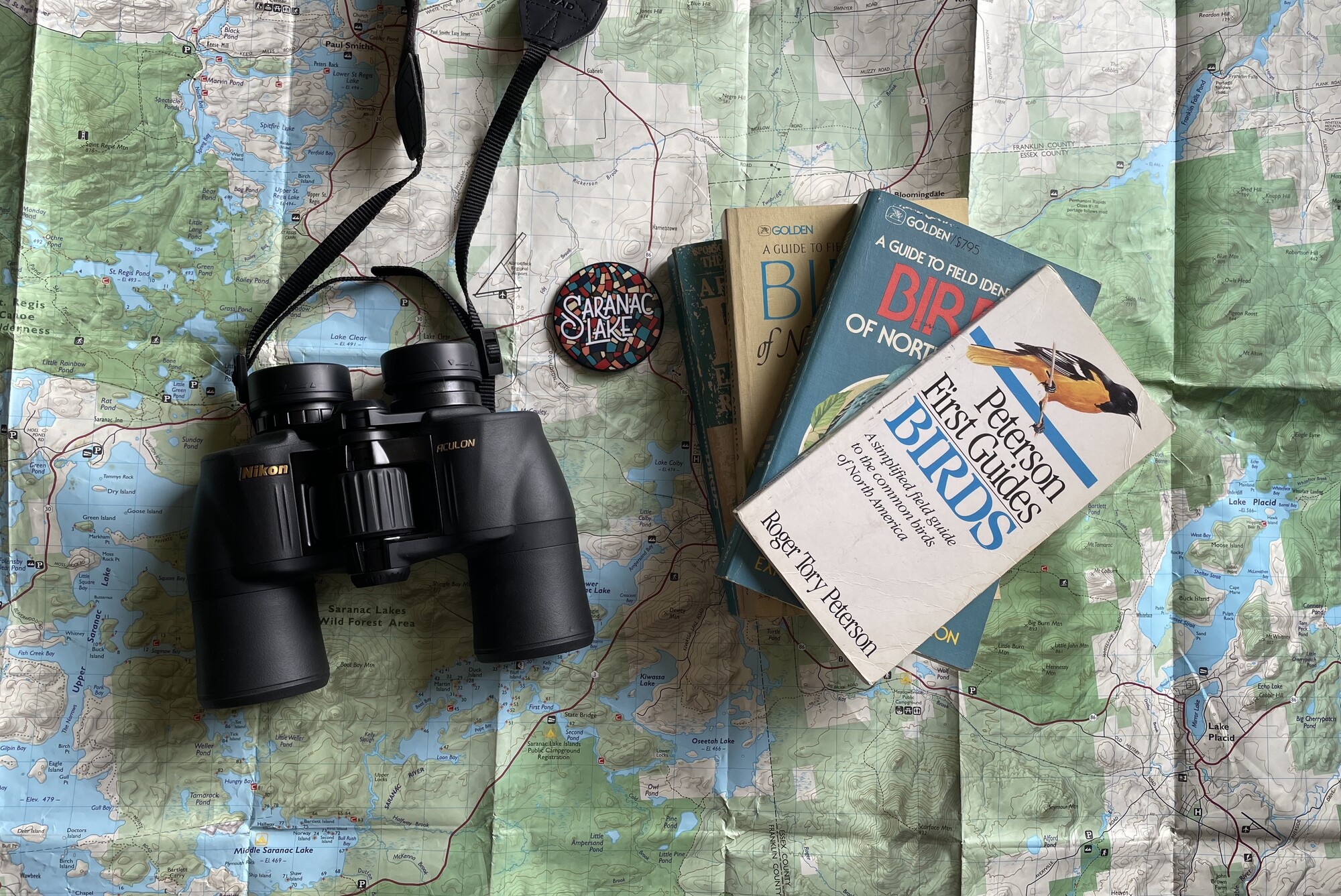
Spotting raptors around Saranac Lake
One of the more charismatic raptors we all know about is the bald eagle, and scoping out those classically Adirondack towering white pines by the water’s edge is a good bet for an encounter from afar. Getting out on the water in your canoe or kayak in the St. Regis Canoe Area can be a good trip spotting bald eagles. Bring binoculars and keep your distance! If you don’t own a watercraft, there are guides in town that will be able to set you up.
For those looking to hear, and maybe even spot, one of our many species of owls in the Adirondacks, spring evenings walking the marked trails at the Paul Smith’s VIC will give you a great chance. Barred owls, with their signature “Who cooks for you” sounding call, are one of the more common spring owl noises you’ll hear reverberating through the forest. The species that Mark bands, the saw-whet owl, is named for the sound of their call, similar to a saw being sharpened on a whet stone. They’re tiny, and love dense vegetation, so you’ll likely hear them long before you see them. Listen for those noises, and those of other crepuscular creatures, during sunsets on the bog boardwalk trails at the VIC.
After learning about Mark and his passion for raptors, get outside and do some birding yourself in Saranac Lake! In addition to raptors, Bloomingdale Bog and Lake Colby are two other birding hot spots for everything from boreal bird species to shorebirds.
